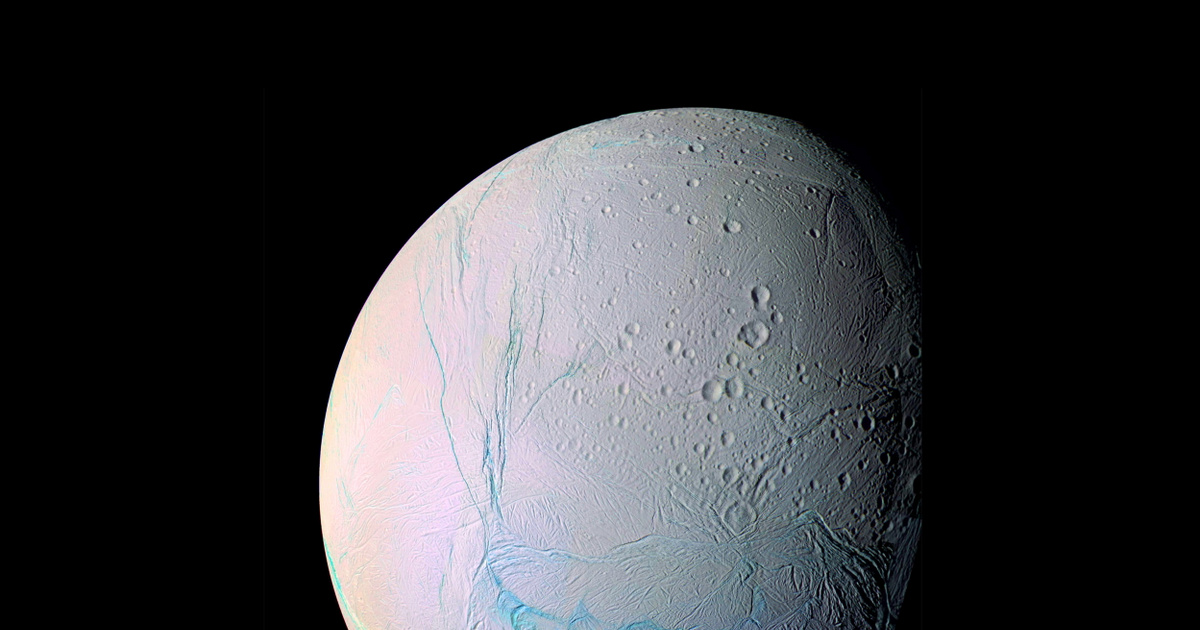An unusual discovery was made by a German research group led by Frank Postberg, a planetary scientist at the Free University of Berlin in Germany, who were able to confirm the presence of phosphorus on Enceladus, the sixth largest of Saturn’s 146 moons. The diameter of the moon is about 500 kilometers, one tenth of The size of the largest moon on the parent planet, Titan.
It is interesting that its surface is covered with pure ice, so Enceladus is one of the brightest celestial bodies in the solar system, as it perfectly reflects sunlight. However, there is an endless ocean under the ice, from which water vapor sometimes rises to the surface – a team from Germany was able to determine the presence of phosphorus in it.
The existence of life is not excluded
Life needs six vital elements, carbon, hydrogen, nitrogen, oxygen, and of course, phosphorus to survive. The first five have already been noted on Enceladus – although the discovery of sulfur remains uncertain – and it now seems very likely that that particular circle may be closing, because according to the most recent data, phosphorus can be observed in about a hundred times greater quantity on the surface of Enceladus than on Earth. All this means that the existence of life in the oceans of the moon is not at all excluded.
Phosphorus is an essential element for planets to be habitable, but it has yet to be detected in oceans beyond Earth. Previous geochemical modeling suggested that the oceans of Enceladus and other icy ocean worlds may be low in phosphates, but we now find ourselves facing surprising results.
– stated the researchers Detection of phosphates originating from the ocean of Enceladus Published in the journal Nature in their studies.
Enceladus—which is one-seventh the size of Earth’s moon—was discovered in 1789 by an astronomer named William Herschel, but until the launch of the Cassini spacecraft, we didn’t know much about Saturn’s moon. As it turned out, under its surface there is a huge ocean, which is kept in a liquid state due to the heat generated by the thrust and attraction due to the gravitational interaction between the Moon and Saturn.
Although Saturn and Enceladus are very far from the life-sustaining heat of the Sun, this does not mean anything thousands of meters underwater, because just as on Earth, on Saturn’s moons, geothermal geysers can exist – and indeed It has been shown to keep the water temperature at a temperature suitable for the existence of life.
This is how they found phosphorus
While reading the study, of course, many people may be wondering how a research team in Germany managed to pinpoint chemicals present on the moon hundreds of millions of kilometers away, when scientists often can’t even guess what the weather will be like that day. . The answer is surprisingly simple:
From data collected by Cassini.
As is known, the spacecraft fell into the clouds of Saturn at the end of 2017, but before that it took a sample of the ring marked “E”, which was formed from ice vapor ejected from Enceladus around Saturn. Because different chemical elements absorb light at certain wavelengths and reflect light at other wavelengths, the research team was able to identify the chemicals present in the ice vapor.
Postberg and his team conducted a comprehensive analysis of 345 particles, and in nine of these they were able to identify spectral features that they believe indicate the unique properties of sodium phosphate, a compound of sodium and phosphorus. After all this, they wanted to prove their hypothesis under laboratory conditions, so they fired a laser at a water jet in which sodium orthophosphate and disodium hydrogen phosphate were dissolved.
To their surprise, they were able to reproduce the chemical signature found in the ice grains in the “E” ring – and the amount of sodium phosphate needed to reproduce the spectrum indicates that Enceladus’ ocean contains particularly large amounts of both materials. However, it will not be easy to confirm the existence of life, because even if it were possible to send another spacecraft to Enceladus, it would be almost impossible to break through the layer of ice covering the surface, which is more than 20 kilometers. Thick in places.
(Cover photo: Enceladus. Photo: World History Archive/Universal Pictures Collection/Getty Images)












































